
Introduction
Red pizza has stood the test of time as one of the most beloved dishes across cultures, celebrated for its vibrant sauce and comforting flavors. Unlike other varieties, it begins with a base of rich tomato sauce, simmered with aromatic herbs that release irresistible fragrance and depth.
This classic foundation pairs beautifully with melted mozzarella cheese, crisp vegetables, and savory meats, creating a meal that satisfies every craving. Around the world, people enjoy Neapolitan pizza, New York slices, and even gourmet twists, yet the essence remains the same: a warm crust holding layers of tradition and taste. Truly, Italian pizza owes much of its fame to red pizza’s timeless charm.
Origins of Red Pizza: From Naples to Global Pizzerias
Red pizza has its roots in Naples, Italy, where the first pizzas were made with fresh tomato sauce, olive oil, and herbs. The use of tomatoes was once considered unusual in Europe, yet Neapolitan cooks proved their worth by creating simple but flavorful pies that later spread around the globe.
Today, red pizza represents tradition and authenticity. Italian immigrants brought their recipes to America, giving rise to popular styles like New York pizza and Chicago deep dish. Each version keeps the red sauce at the heart of the dish, showing how this humble topping became a worldwide favorite.
Ingredients
- 1 medium pizza dough (homemade or store-bought)
- ½ cup tomato sauce (fresh or canned, simmered with herbs)
- 1 cup shredded mozzarella cheese
- 2 tablespoons olive oil
- 1 tablespoon fresh basil leaves
- 1 tablespoon oregano (dried or fresh)
- Salt and pepper to taste
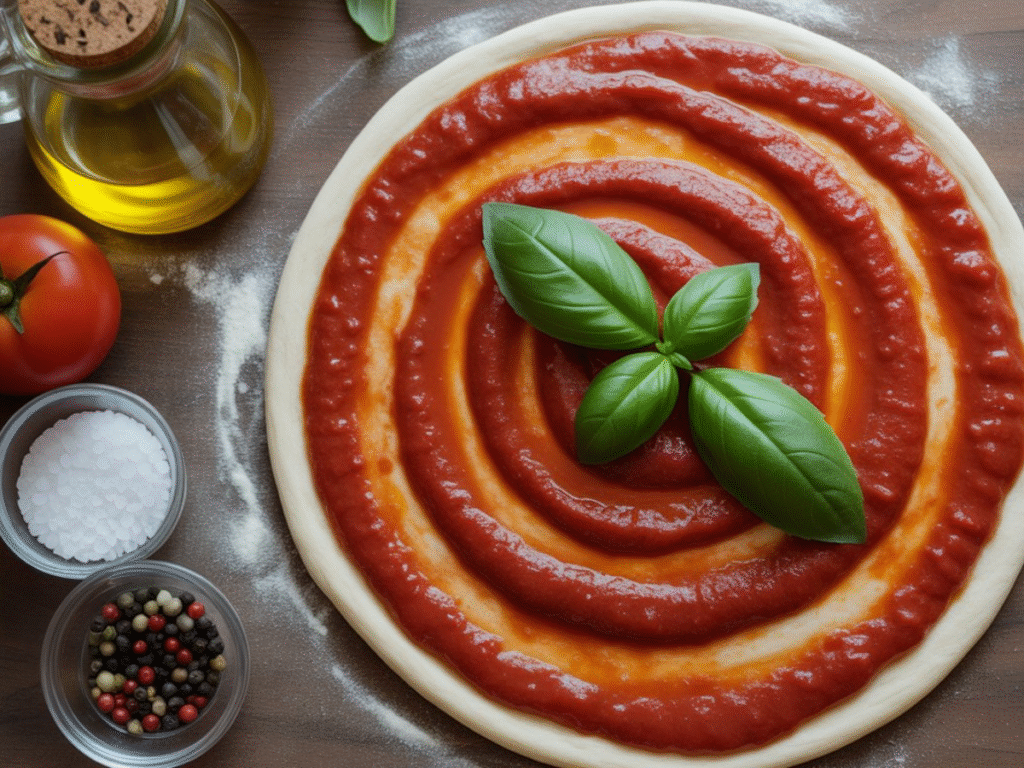
Optional toppings:
- Sliced mushrooms
- Onions
- Bell peppers
- Pepperoni or chicken
- Olives or anchovies
Instructions
- Preheat the oven to 475°F (245°C) and place a pizza stone or baking tray inside.
- Roll out the pizza dough on a lightly floured surface to your desired thickness.
- Transfer the rolled dough to parchment paper for easy handling.
- Spread a thin layer of tomato sauce evenly, leaving a small border for the crust.
- Drizzle olive oil and sprinkle oregano, salt, and pepper over the sauce.
- Add mozzarella cheese and arrange toppings like mushrooms, onions, or pepperoni.
- Slide the pizza onto the hot stone or tray and bake for 10–12 minutes until golden and bubbly.
- Remove from the oven, top with fresh basil leaves, and let it cool slightly before slicing.
How to Make Red Pizza at Home: Tools, Ingredients & Technique
Making red pizza at home is easier than most people think. All you need is fresh flour, high-quality tomato sauce, cheese, and a topping of your choice. Baking stones or a steel pizza oven help mimic the stove, causing crusts to be satisfactorily crisp.
Homemade versions allow creativity. Some prefer a slow-ripening sauce with herbs, while others like fast mixtures of fresh tomatoes. With just a few devices, any kitchen can transform into an individual pizzeria, allowing you to enjoy pizza whenever you want.
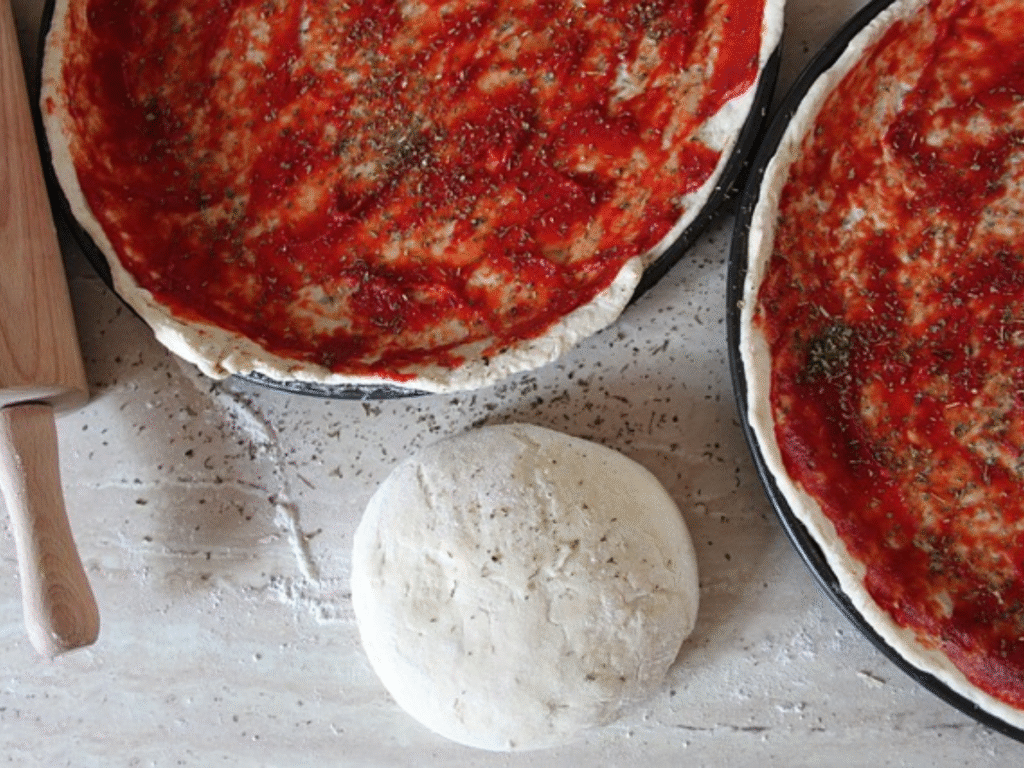
What Makes Tomato Sauce Ideal for Red Pizza
The rich base of tomato sauce gives red pizza its distinct flavor. Tomatoes contain natural glutamates that enhance savory notes, which makes every topping taste more vibrant. Chefs often simmer tomatoes with garlic, basil, and oregano, creating a sauce that balances sweetness with acidity.
Unlike heavy cream bases, tomato sauce adds moisture without weighing down the crust. Its bright color, nutritional value, and versatility explain why red pizza remains the default choice in most pizzerias. From simple Margherita to meat-loaded pies, the sauce ties all ingredients together.
Types of Crusts Commonly Used in Red Pizza
Crust plays a significant role in the texture of this pizza. Traditional Neapolitan crusts are thin, chewy, and slightly charred from wood-fired ovens. American versions, like New York style, rely on foldable slices, while Chicago’s deep dish creates a thick, buttery foundation.
Different crusts create unique experiences. Thin crust keeps focus on the tangy sauce, while pan-baked dough provides a hearty bite. No matter the style, the crust acts as the canvas for the iconic red sauce, letting flavor and tradition shine.
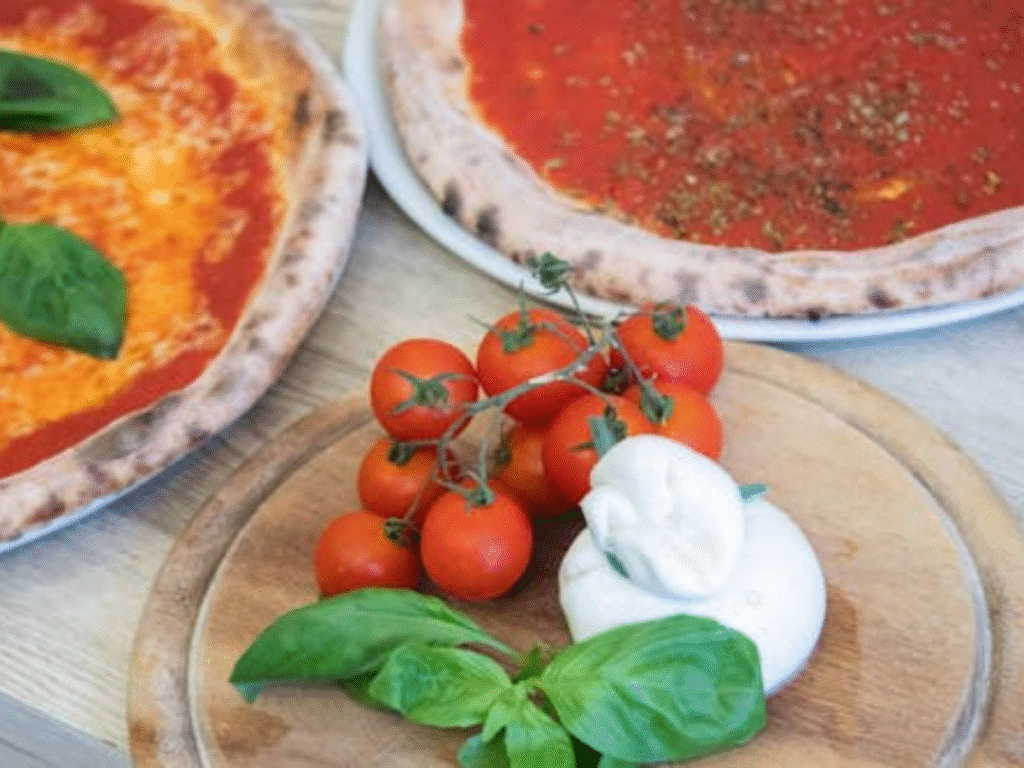
Popular Toppings
Classic toppings like mozzarella, pepperoni, and fresh basil are closely tied to red pizza’s identity. Vegetables such as mushrooms, onions, and bell peppers add earthy depth, while olives or anchovies bring salty sharpness. Each ingredient blends harmoniously with the tomato base.
Modern kitchens experiment with gourmet toppings. Smoked cheeses, roasted garlic, or spicy salami introduce bold contrasts. Even vegan variations thrive with plant-based mozzarella and grilled vegetables. Regardless of creativity, the vibrant red sauce always holds everything together.
Health Benefits & Nutritional Profile
Many assume pizza is unhealthy, but red pizza offers surprising benefits. Tomatoes are rich in lycopene, an antioxidant linked to heart health. When paired with olive oil, absorption increases, giving the body extra protection against oxidative stress.
Nutritional balance depends on preparation. Thin crusts with vegetables and moderate cheese provide fewer calories while still offering flavor. Here’s a simple nutritional comparison:
Pizza Type | Calories (per slice) | Key Nutrients |
Red Pizza with Veggies | 180–220 | Lycopene, fiber, calcium |
White Pizza | 250–300 | Fat, calcium, protein |
Red Pizza vs White Pizza: Key Differences You Should Know
The red pizza stands out due to the tomato sauce, while the white pizza often leaves the sauce completely or uses cream, cheese, or olive oil instead. This difference makes different textures and taste profiles that appeal to various preferences.
This pizza feels lighter and healthier due to its acidity. White pizza bends toward prosperity and joy. Knowing these contradictions helps those who eat food choose according to their mood – whether they prefer creamy or bright tomatoes.

Regional Variations of Red Pizza Styles Worldwide
Each country has adopted red pizza in its own way. In Italy, Margherita is still the standard for pizza, showcasing sauce, cheese, and basil in perfect harmony. In the United States, the varieties of New York Slice, Chicago Deep Dish, and California-style pizza thrive.
Other nations provide cultural derivation. Japan uses seafood spreads, while Middle Eastern chefs often sauce with spices such as cumin. Despite the differences, the integrated thread is a red sauce foundation that easily adapts to the local taste.
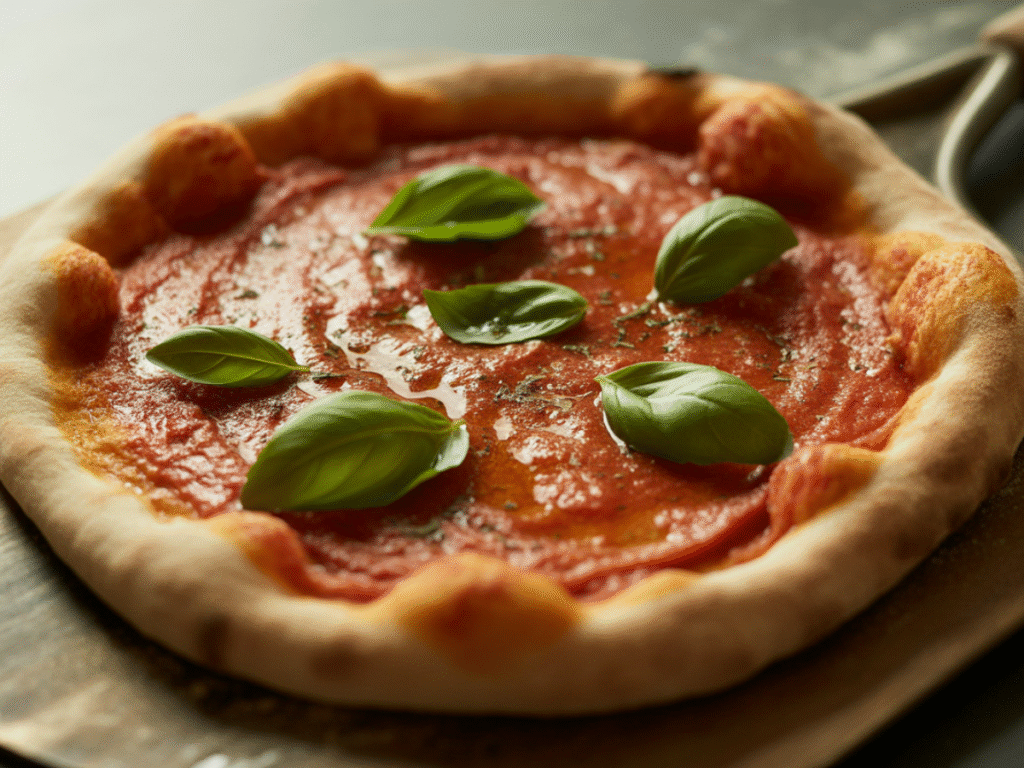
Pairing Red Pizza with Drinks & Side Dishes
Pairing red pizza improves the experience. A complement to the acidity of tomato sauce balances the richness of cheese. Sparkling fresh, like water or iced.
Round side counter meal. The sharp salad with vinaigrette showcases the freshness of the red pizza, while garlic bread or fried vegetables provide an extra layer of comfort. The selection of the right pair converts a simple disc into a complete food phenomenon.
Tips to Choose the Best Red Pizza Near You
Finding good red pizza is not always easy, but some tricks can make a difference. Look for places that use fresh tomatoes and high-quality cheese instead of processed topping. Oven-rich too; made of wood or stone, pizzas often provide better crusts and flavors.
Local reviews provide honest insight. In many cities, the award-winning Pizzerius is now recognized for his mastery of traditional red pizza. The discovery of these places not only satisfies the cravings of food enthusiasts but also introduces you to unique regional interpretations of taste.

FAQs
What is a red pizza?
Red pizza is a classic style topped with tomato sauce, cheese, and various toppings. Its base of rich red sauce gives it the name.
What’s the difference between red pizza and white pizza?
Red pizza uses a tomato sauce base, while white pizza skips tomato and relies on cream, cheese, or olive oil for flavor.
What is red pizza called?
In Italy, red pizza is often called “pizza rossa”, which means pizza with tomato sauce as the foundation.
Is red pizza healthier than other pizzas?
Yes, red pizza can be healthier because tomatoes are rich in lycopene, an antioxidant linked to heart health.
Why is tomato sauce important in red pizza?
Tomato sauce adds flavor, color, and balance to the pizza, making it lighter yet more satisfying than heavier cream bases.
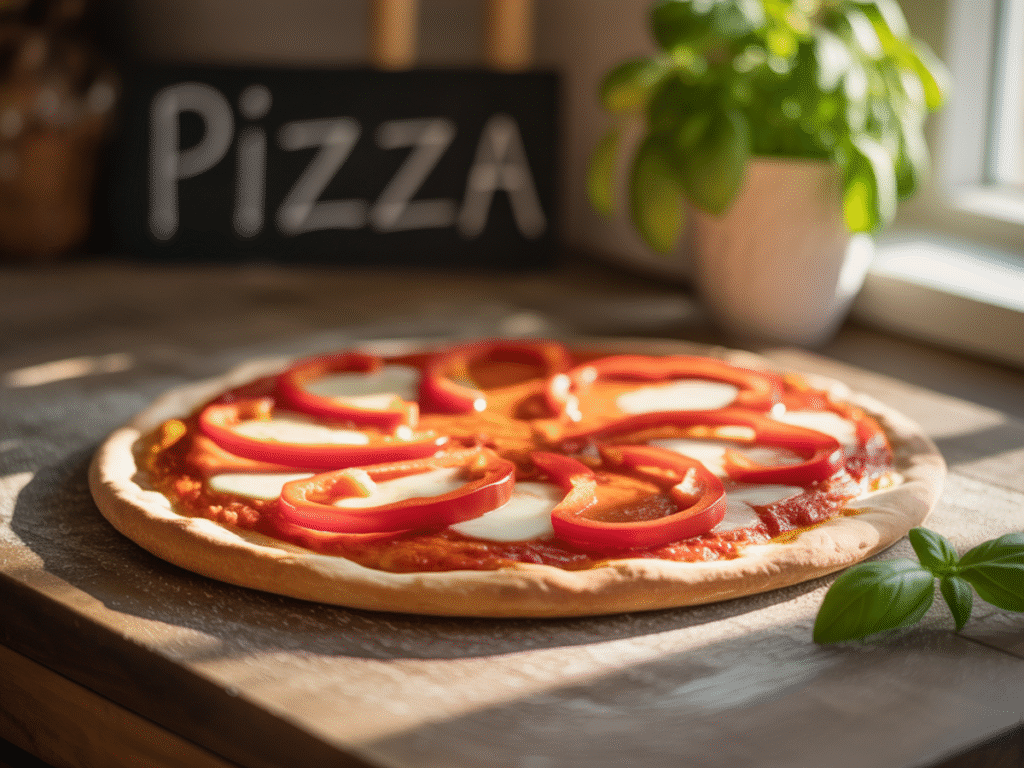
Conclusion
Red pizza is more than just a meal; It is a symbol of tradition, culture, and comfort that has traveled from Napoli to kitchens and restaurants all over the world. Rich tomatillo, versatile crust, and endless topping opportunities make it a dish that everyone can enjoy, whether you prefer a simple marita or a loaded deep plate.
In addition to its taste, it also provides nutritional benefits from the base of tomatoes, proving that pizza can be both delicious and nutritious. Whether you bake it at home or order it from your favorite pizzeria, Red Pizza remains a timeless classic that continues to delight people with its lively taste.
So gather your friends and family, and indulge in a wonderful experience of sharing slices (or two) of red pizza – order, put the oven to work, and let the flavors come together!
